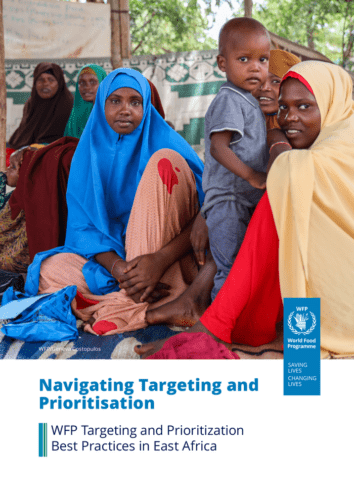Attachments
This paper presents a regional outlook of targeting and prioritisation across Eastern Africa, with a focus on best practices and the potential unintended effects of prioritisation on the food insecure left behind, WFP operations and staffing and, ultimately, how this might affect WFP’s mandate of “Saving Lives and Changing Lives”.
59 M Food Insecure in Eastern Africa IPC Phase 3+ or equivalent
10 M IPC 4+ or above
As of the last quarter of 2023, approximately 59 million people (nearly 20 percent of the population in East Africa) were suffering from acute food insecurity (IPC Phase 3+ or equivalent).
Five countries in Eastern Africa among the most severe food crises in the world: Ethiopia, Somalia, South Sudan, and Sudan account for 81 percent of the acutely food insecure population in the Region.
WFP’s five largest operations in the Region (Ethiopia, Somalia, South Sudan, Sudan and Uganda) provide food assistance to 30 million beneficiaries.
Prioritisation will affect a total of 10 million beneficiaries in these countries
These are households with low resilience to shocks and these changes in assistance will likely lead to a 30 percent increase in hunger
6 million children under five are estimated to suffer from acute malnutrition
Ethiopia, Somalia, Sudan, and Uganda, have all opted to reduce the number of beneficiaries they serve. Only 12.7 million beneficiaries will be reached in 2024 due to prioritisation.
When it is impossible to reduce the number of beneficiaries due to widespread vulnerability and other factors, country offices (COs) opt to keep the same caseload of refugees while decreasing the size or length of the rations provided.
The countries that opted for this approach are Burundi, Djibouti, and Kenya and each of them applied a specific rationale.
In the most severe cases, when funding cuts heavily impact the ability of WFP to continue its operations, COs are forced to reduce both the caseload and the rations. Two COs in the Region are currently facing this scenario: Rwanda and South Sudan.
Somalia and Ethiopia will record the highest funding cuts in 2024 (down 58 and 50 percent compared to funding levels planned in 2023, respectively); South Sudan will see a decrease in funds by 38 percent.
Major operations such as Somalia and South Sudan, will see a reduction of staff ranging from 17 percent (Somalia) to 46 percent (Sudan).
Procurement of food items was slashed in half in 2023 and the projections for 2024 are not likely to increase considering the lack of funds.
Source link : https://reliefweb.int/report/ethiopia/navigating-targeting-and-prioritisation-wfp-targeting-and-prioritization-best-practices-east-africa
Author :
Publish date : 2024-03-18 07:00:00
Copyright for syndicated content belongs to the linked Source.
